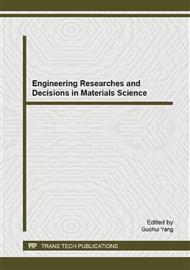p.92
p.98
p.104
p.110
p.115
p.120
p.126
p.132
p.138
The Influence of Bone Cement Mixture Characteristics on Orthopedic Surgery
Abstract:
An important breakthrough of orthopedic surgery is to use bone cement to fill the space between an artificial joint and bone tissue, which allows the artificial joint to stabilize on human bone tissues. However, surgery failure cases due to bone cement utilization and side effects still exist at present. Therefore, the purpose of this study is to investigate bone cement characteristics, such as coagulation time, consolidation time, maximal exothermic temperature and anti-compressive strength, etc. under different mixture ratios. Our results showed that the smaller the ratio of polymethyl methacrylate and methyl methacrylate (PMMA/MMA), the lower exothermic temperature and the stronger anti-compressive resistance. These results are helpful to reduce incidences of post surgery side effects. Of note, bone cement supplement decreases corresponding to loading and operating time, which will become a major challenge for orthopedic surgery.
Info:
Periodical:
Pages:
115-119
Citation:
Online since:
April 2015
Keywords:
Price:
Сopyright:
© 2015 Trans Tech Publications Ltd. All Rights Reserved
Share:
Citation:


